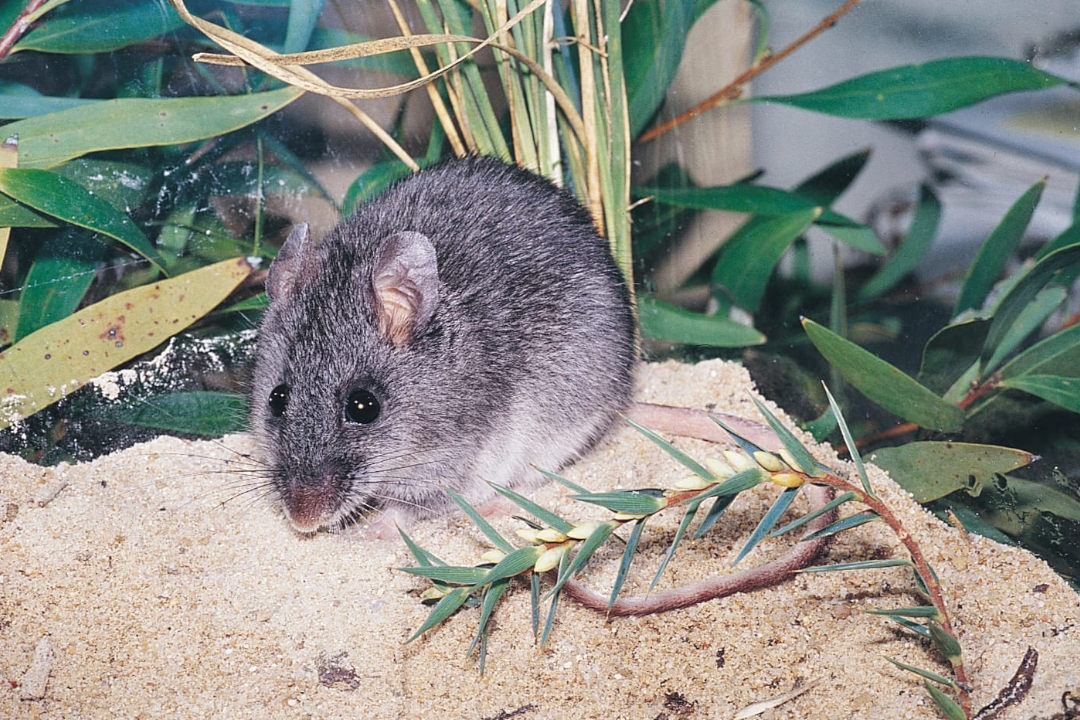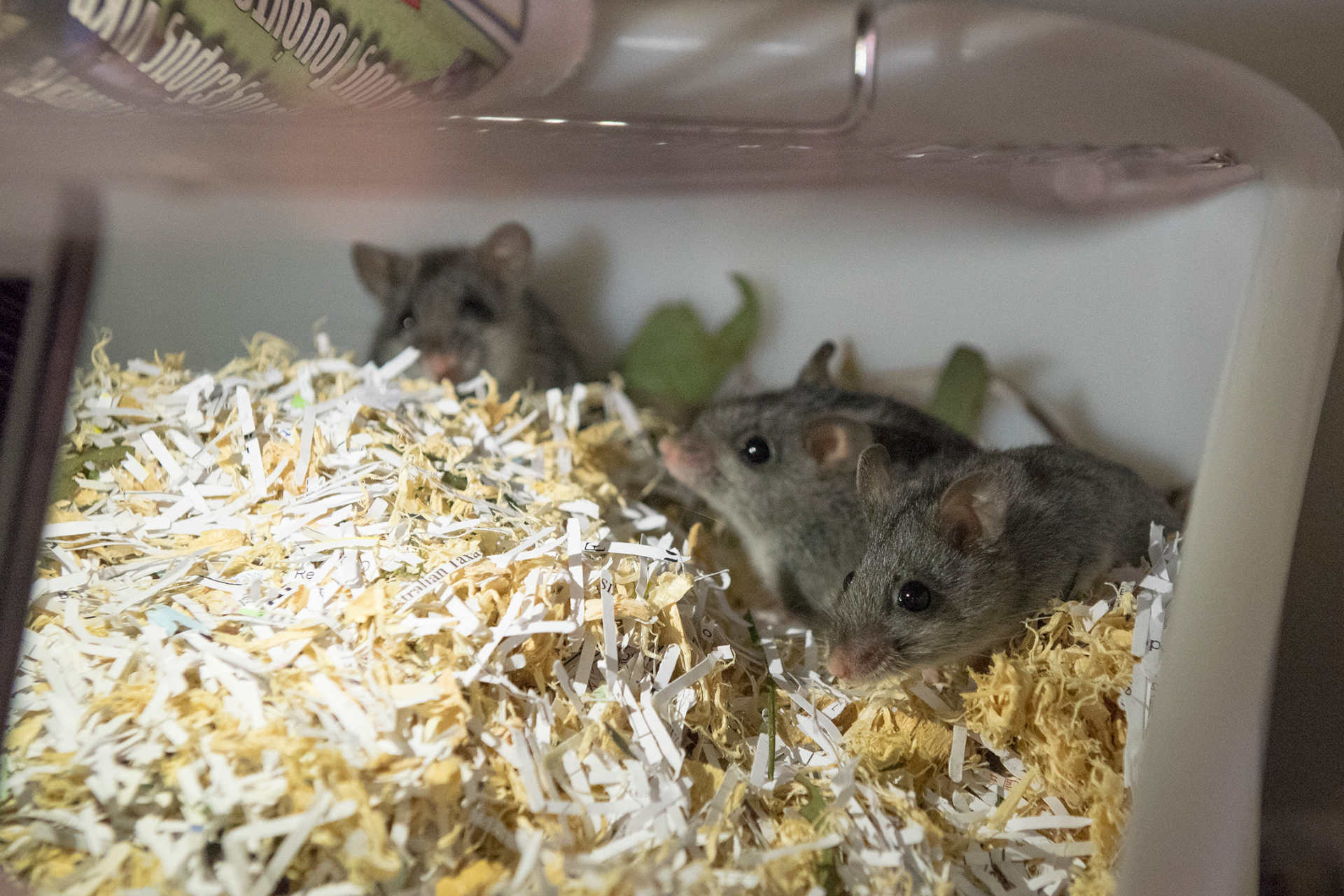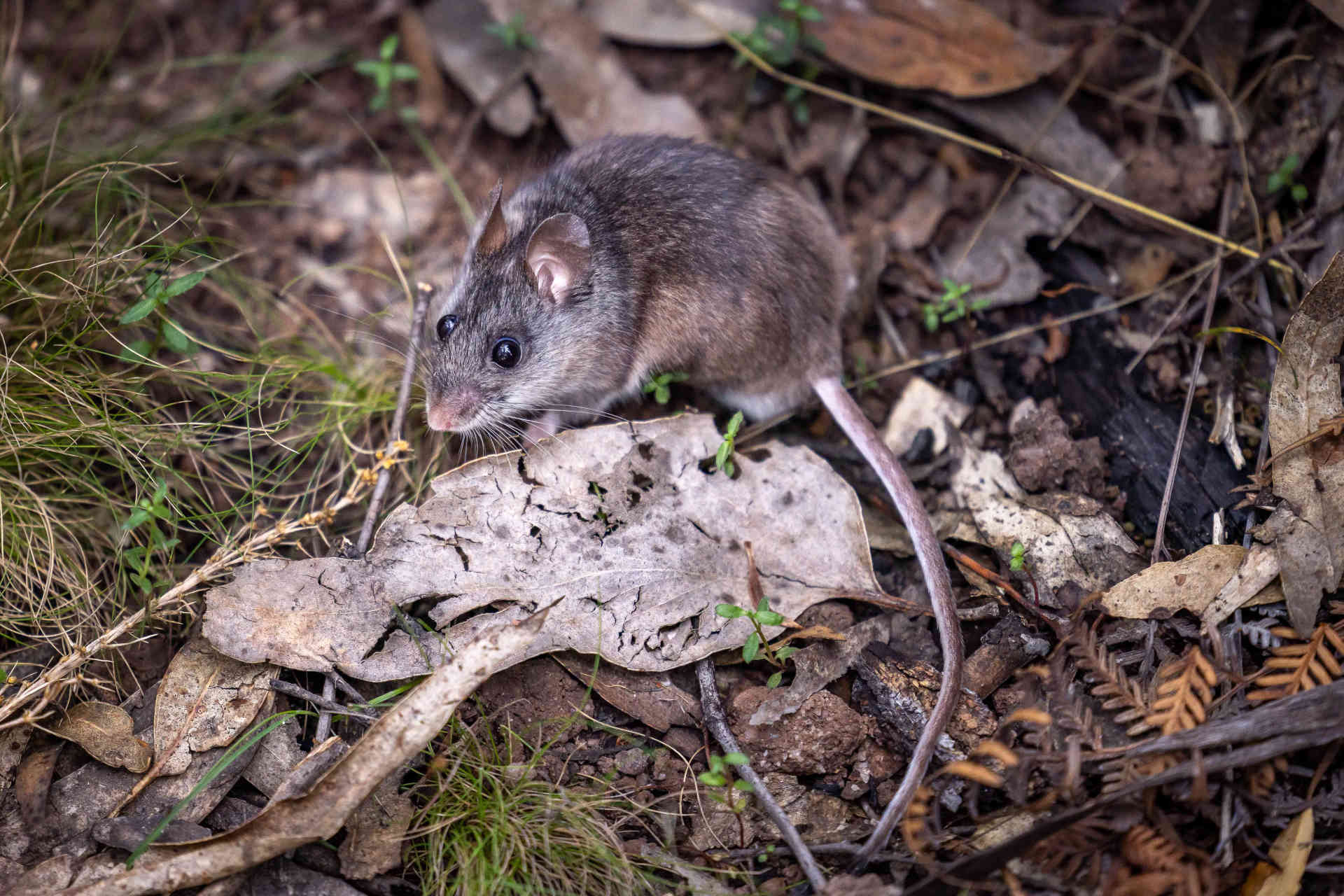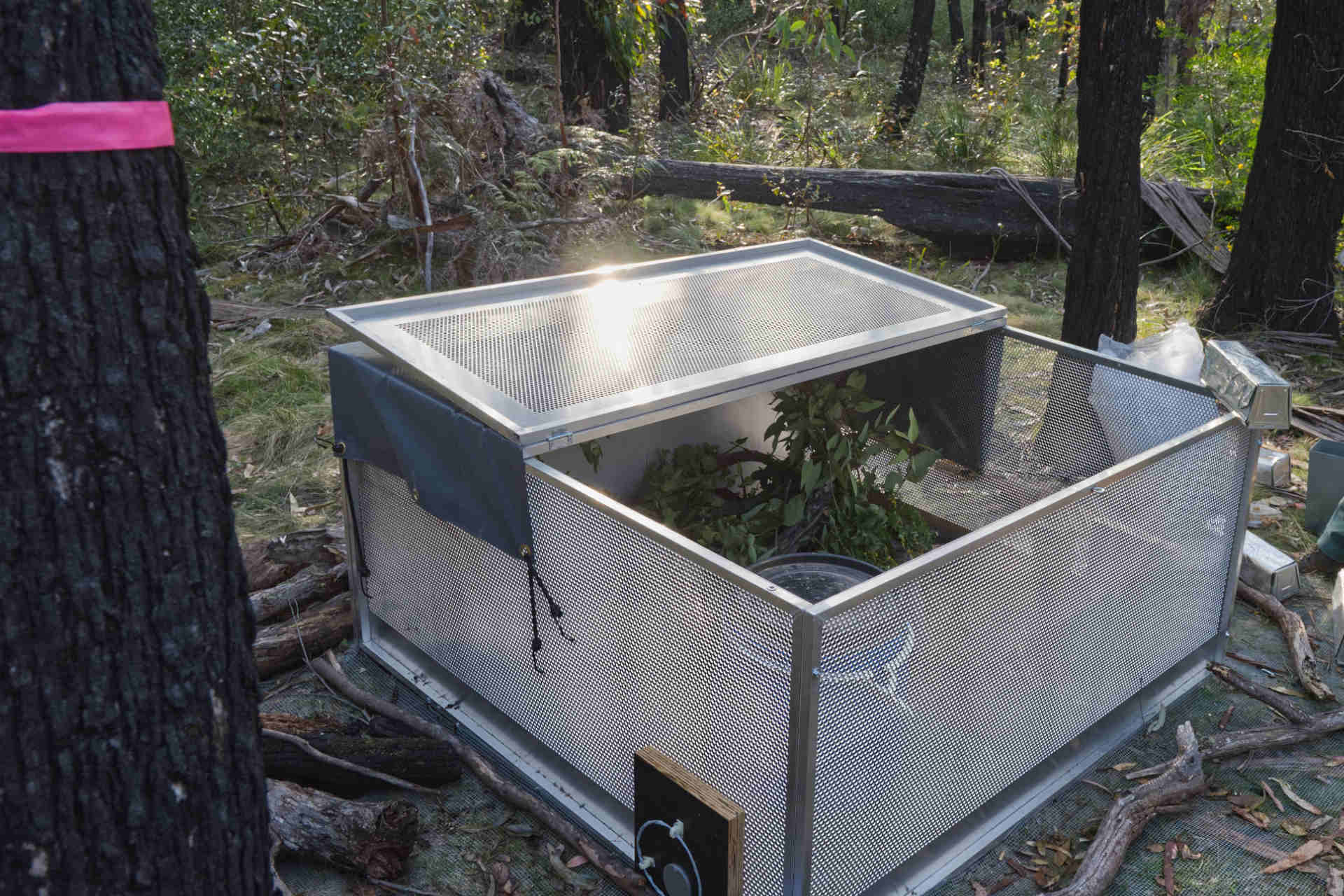Stage 1 area is complete
In 2024, the Stage 1 area, a 240-hectare area nested within the larger feral predator-free area, was established after the successful construction of the conservation fence and feral predator eradication, allowing for reintroductions to commence.
Reintroduction of the smoky mouse
The critically endangered smoky mouse (Pseudomys fumeus) is the first threatened mammal to be reintroduced into the Nungatta feral predator-free area in South East Forest National Park, making a return to an area where it has not been seen since the 1990s.
The smoky mouse is a relatively large native mouse with distinctive grey fur. It was first recorded in New South Wales in 1993 near Mount Poole in Nungatta State Forest. Smoky mouse numbers have dwindled due to predation by feral cats and foxes, habitat loss, inappropriate fire regimes and die-back of understorey shrubs caused by the soil-borne fungus Phytophthora.
Smoky mice have been bred in captivity in New South Wales and the Australian Capital Territory for the first stages of this reintroduction. Captive breeding and reintroduction of the smoky mouse is a key conservation action under the NSW Government’s Saving our Species program and is a collaboration between the NSW National Parks and Wildlife Service, Saving our Species, the National Threatened Species Institute and the University of Canberra.
Initially, 49 animals were translocated to Nungatta in September and October 2024. They spent up to a week in soft-release enclosures before their release into the Stage 1 area. The use of soft-release enclosures allows:
- time for the animals to acclimatise and for pairs to breed
- close monitoring during acclimatisation
- reduced potential for too many animals to move long distances from the release area.
Post-release monitoring, through a range of methods including cameras, microchip readers, thermal observations and radio tracking, is indicating that the animals are adapting well to their new environment. A juvenile was recently detected for the first time, showing the translocated animals are successfully breeding.
In autumn 2025, a further 30 animals were translocated to Nungatta to supplement the existing population. Further smoky mice are planned to be released later this year and in future years, to support the development of a viable and secure population.
Baseline ecological health surveys complete
Over the past 3 years, baseline surveys conducted at 20 monitoring sites have captured information about resident species, ecosystem function and local threats. A range of biodiversity indicators are monitored at each site, using a variety of techniques such as:
- traps – Elliot traps, pitfall traps, artificial reptile refugia
- remote cameras
- sound recorders – for recording vocalising mammals, birds and bats
- quadrats – for recording plants, fungi, forest structure and soil function.
Construction of Stage 2 area recently completed
The construction of the Nungatta feral predator-free area is now complete, with the larger 1,840-hectare Stage 2 area finalised in early 2025. The entire area is now fully contained by a 25-kilometre electrified predator proof conservation fence and barriers across pipes and under bridges.
Eradication is underway in Stage 2
Eradication has commenced to remove all feral predators such as cats, foxes and wild dogs inside the Stage 2 fenced area, with the aim for it to be declared feral predator-free by the end of 2025. Techniques include trapping, aerial and ground baiting, as well as emerging technologies like Felixer cat grooming traps. Five Felixers have been deployed and have been proven to be successful to date.
Once declared feral predator-free, reintroductions of locally extinct species into the Stage 2 area can commence. Candidate species for reintroduction include the long-footed potoroo, eastern bettong, eastern quoll and New Holland mouse. All species considered for reintroduction will undergo a rigorous assessment and approvals process.
Next project update
The next project update will be published when there is more news about threatened mammal reintroductions and the Stage 2 area is declared feral predator-free.




